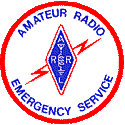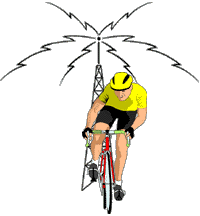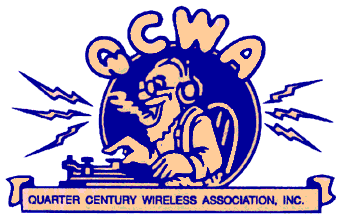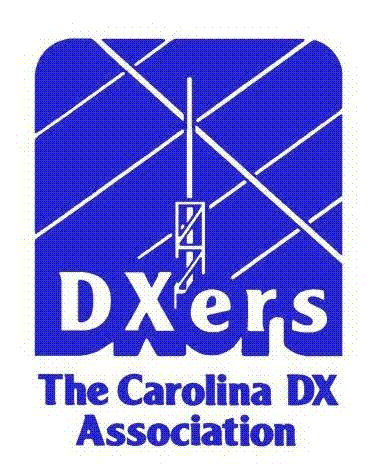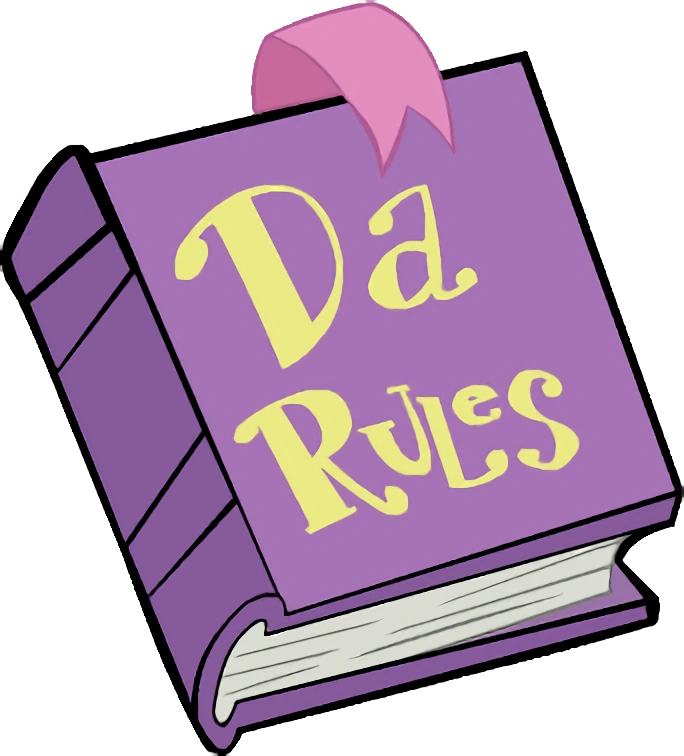RARS Repeater Operating Guide |
|
Let's get basic for a few paragraphs... and if you're an old-timer, you might want to read through this section just to see if we got it right. First, what exactly is a "repeater"? And why do we use them? To extend our range, we use repeaters. A repeater is a specially designed receiver/transmitter combination. When you operate through a repeater, its receiver picks up your signal on the inputfrequency, and the transmitter re-transmits -- or "repeats" -- you on the outputfrequency. For example, one of the RARS repeaters hears you as you transmit on 146.04 MHz, and repeats you onto 146.64 MHz. You'll hear this repeater referred to as Six-Four. Repeater antennas are located on tall towers, buildings, or mountains, giving them much greater range than radios with antennas near the ground. And when you're in range of a repeater, you can talk to everyone else in range of that repeater. RARS' 146.64 repeater is located in west Raleigh, near the beltline and Hillsboro St. Its antenna is on the side of a tower that puts it about 350 feet above average terrain. A mobile station running 50 watts can reliably communicate through the repeater out to about 35 miles. So if you were 35 miles north of the repeater, you could talk to someone 35 miles south of the repeater. That's 70 miles between you -- a whole lot better than the 10 or so miles you could cover without the repeater! There are literally thousands of repeaters across the US (and the world). Each one can have it's own peculiarities and unique operating procedures, but there are some basics that apply to almost all of them. Really complete instructions would fill a book, bore you to tears, and start some fights about what's correct and what's not (operating procedure is a matter of strong opinion in Ham Radio!). We'll risk all of that now, but try not to fill a book. PLAIN OLD TALKING.Mostly, you're here to get on the air and chat, right? OK, first you set your radio for the repeater you want to use. Don't know how to find a local repeater frequency? You can find a list of Triangle area 2-meter repeaters here. If you're outside the Triangle area, you'll need a repeater directory. They're available from the ARRL and various websites. There's even a "Repeater Book" AP for that! Or you can always just scan across the band for activity using this chart as your guide (click on the chart for a larger view): Once you've selected a repeater and dialed it up on your radio, the first thing you should do is... LISTEN for a minute. Repeaters are party lines. Lots of people use them on and off throughout the day, and the one you've selected may be busy with another conversation right now. So listen for a minute. (Does anyone remember what party lines are? Kids, ask your grandparents!) If the repeater isn't busy, key your transmitter and say something like "KN4AQ listening. Anybody want to chat?" (Use your own call, not mine, please). You could call CQ, but that time-honored method of seeking a contact never caught on with FM operators. Somebody may even tell you your not supposed to call CQ on FM, but you can. What the heck, go ahead and call CQ. When you release your transmit button, most repeaters will stay on the air for a few seconds, and many will send some kind of beep. Then, the repeater transmitter drops off the air. This little interlude is called hang time. The beep is there to remind everyone to leave a pause between transmissions in case someone wants to break in. Even if there's no beep, leave a pause anyway. Somebody may have just come across a traffic accident and needs the repeater to report it. If nobody leaves a pause between transmissions, they can't break in. If somebody answers you, then have a good time! You can talk about anything you want – there are not many rules about the content of Amateur conversation. You can't use Ham Radio to conduct your business, but you can talk about where you work and what you do. Prime time TV language has been peppered with some hells and damns, and so has language on some repeaters. RARS discourages that. You're not having a private conversation – you may have lots of listeners, some of them children. Keep that in mind as you choose language and subject matter. THREE-WAY RADIO.
Not all conversations are strictly two-way. Three,
four or five or more Hams can be part of a roundtable conversation
(five or more will be pretty unwieldy). A free-wheeling
roundtable is a lot of fun... and it poses a problem: when the person
transmitting now is done, who transmits next?
Too often, the answer is everybody transmits next, and
the result is a mess. The solution is simple -- when you finish
your transmission in the roundtable, specify who is to transmit next.
"... Over to you, Rick. KN4AQ." WE PAUSE FOR STATION IDENTIFICATION.The Rules say you must ID once every 10 minutes. RARS is big on clear identification when you use our repeaters, but you don't have to overdo it. Give your callsign when you first get on (this isn't specifically required by the rules, but RARS encourages it on our repeaters), then once every 10 minutes, and again when you sign off. You don't have to give anyone else's callsign at any time, although sometimes its a nice acknowledgment of the person you're talking to, like a handshake. BREAKING IN. Repeaters are shared resources -- the party-line. There are many times and reasons that a conversation in progress might be interrupted. You might break in to join the group and add your comments on the subject at hand. Someone might break in on you to reach someone else who is listening to the repeater. You might have to report an emergency. How to break in is the subject of debate and disagreement. Here are some suggestions:
 #$%~á@&#+*!!
What was that I just heard? A burst of foul
language and nasty noises on the repeater? Jamming? Sounds
like something straight out of CB! I'm OUTRAGED,
and I'm gonna tell that sucker off! He can't get away with that
on our repeater! Gimmie that microphone!
#$%~á@&#+*!!
What was that I just heard? A burst of foul
language and nasty noises on the repeater? Jamming? Sounds
like something straight out of CB! I'm OUTRAGED,
and I'm gonna tell that sucker off! He can't get away with that
on our repeater! Gimmie that microphone!
Cool down. It doesn't happen often, but it does happen – it's a big world out there, and there are some bad people in it. Some of them find a Ham Radio now and then, and discover the delight of offending an audience. The key word is audience. Deliberate interference and bad language are designed to make you react. The person doing it wants to hear you get mad. They love it. And if they don't get it, they go away, usually quickly. So when you hear the rare nasty stuff on the repeater, just ignore it. Don't mention it at all on the air. Don't mention that you're not mentioning it. Sometimes a repeater control
operator will decide that the best way to handle the situation is to
turn off the repeater or one of its functions for a while, but the rest
of us should bite our tongues and be silent. 
DX! Well, you probably won't be hearing Albania on two-meters anytime soon, but VHF does have it's own form of DX. A few paragraphs ago we mentioned that the RARS .64 repeater had about a 35 mile range. Usually. Sometimes, though, VHF/UHF opens up, and stations can be heard for hundreds of miles. This is another book-length subject. We'll just squeeze in that VHF/UHF band openings are a double-edged sword. It's exciting to talk to someone 200 miles away, and it's OK, too. But keep in mind that repeaters were designed to cover local territory, not half the country. So when the band opens up, there is the potential for lots of interference as well as lots of fun. Repeaters on the same frequency will suddenly be too close together. You could very easily be keying up two or more of them at once. To be responsible, get to know where your signal is going (a repeater directory will help). Use a directional antenna, minimum power and keep your conversation short. On .64, we have to be particularly sensitive to another 146.64 repeater in Winston-Salem, about 100 miles west. When the band opens, even just a little, their mobiles begin keying up our repeater, and we begin keying up their repeater. While normally not fatal, this can be irritating. Running minimum power, either mobile or from home, will help. That repeater uses 100 Hz tone full-time, and our antenna and tower put a deep null in their direction, so it's not a big problem anymore. How much power is too much? Within 15 miles of the .64 repeater (that's every place in Raleigh), two to five watts into a mobile antenna is all you need. 50 watts is excessive. At home, with an antenna up on the roof, 50 watts is really excessive for talking through a local repeater. When the band is open, even a five-watt mobile signal can travel from Raleigh to Winston-Salem. At those times, patience and courtesy will help a lot. SIMPLEX. This may come as a shock, but you don't have to use a repeater to communicate on two-meter FM. You can use simplex, which means your radio talking to my radio directly. We do have that five to fifteen mile range – much more if we're on our home stations. Why not use it? But don't just pick any old frequency your radio can generate to talk simplex! You may end up on the input of a repeater and interfere with people you can't hear. Use the Band Plan simplex channels:
Here's a simple block diagram based on SERA's Two Meter
Bandplan. The complete two-meter band plan is much more detailed than
this chart shows. The Repeater and Packet segments are divided
into more than 100 individual "channels" for repeaters and simplex
operation. For a really complete look at the two meter band, download this PDF file, containing a listing of every segment of the band plan and more. The two-meter band plan looks complex, perhaps even convoluted, doesn't it? That's because two-meters grew in spurts, a little here, a little there. In the early 1960's, there was just a little AM and SSB activity concentrated just above 145.0 MHz. FM and repeaters were barely getting started, around 146.94 MHz. The rest of the band was empty. FM began to grow, but it was constrained by FCC regulations that let Techs use only 145.0 to 147.0MHz. Satellites were launched, packet was invented, and rules changes moved Techs and repeaters around the band. Everyone needed a slice of the pie, and the result is the band plan you see in the chart. (When I teach a class in the fall, I say that two meters is carved up like a Halloween Pumpkin.) Check out the frequency coverage of your shiny new two-meter FM handheld. It covers the whole band, doesn't it? But if you use it any-old-where, you might interfere with someone - maybe an SSB operator, or a satellite station, or a repeater input. Please stick to the Band Plan channels. If we all do that, we'll get maximum use and enjoyment out of the band. EMERGENCIES. Helping to communicate in emergencies is Amateur Radio's #1 reason for existence. Repeaters are excellent tools for emergency communication, and the most frequent type of emergency called in is the traffic accident. And that's why we leave a pause between transmissions – you never know when someone (you) will need the repeater in an emergency. During these operations, the active repeater will probably be closed to regular conversations. But unless a major disaster has hit
the area, there will be other repeaters available for regular activity.
Ask the net control station for the status of the repeater. PUBLIC SERVICE. Hams across the country regularly help charitable organizations with communications during fund-raising events like bike-a-thons. Repeaters and simplex are both used for public service events. Their activity isn't too compatible with other hams rag-chewing on the same channel, so during the event a repeater will again be "closed." If you need to make a call, call the net control station and most likely you can use the repeater for a minute with no problem. Check the RARS Public Service web page for details on activities you can help with. GIVING
DIRECTIONS.What's giving directions doing in a repeater
operating guide? Just listen for a while, and you'll hear why. We give
a lot of directions on repeaters, to locals in an unfamiliar part of
town, and to traveling hams visiting the area. And, sad to say, too
often we do it badly. One person will give adequate directions, and
someone else just has to break in to give his favorite
shortcut. Or somebody gives a two-minute long string of street names
and landmarks, non-stop. The poor, lost ham who asked will then thank
everyone politely, turn off the radio, and pull into a gas station to
try again. We literally fall all over each other trying to be too
helpful! If someone has given directions that will get the traveler to her destination, let it be. Make a correction only if the directions are dead wrong (they'll end up in Albania?). If it's your turn to give the directions, keep them short and simple. And it might be helpful to find out where the mobile station is before telling him where to go! NETS. Repeaters are great places for nets, and there are lots of nets. A net is an organized on-the-air activity. We've mentioned a few already, like SKYWARN and ARES, but there can be many other types – traffic nets, rag-chew nets, specialty topic nets, club information nets, and more. When a net is active on a repeater, the repeater is closed to other activity. The net-control is in charge of the frequency, and all communication should be directed to that station first. The three-minute timers are one way to comply with the FCC rules for stations being operated by remote control (most repeaters are remotely controlled). They are not designed as punitive measures for gabby hams... but come to think of it, given the party-line nature of repeaters, and the potential for that emergency traffic, it's a good idea to keep your brilliant monologues a bit shorter anyway. If you must ramble on, orator that you are, don't forget to let the timer reset, and check if somebody else needs the repeater, after a minute or two. CODED SQUELCH. There are two kinds of Coded Squelch commonly available to Amateurs: CTCSS, commonly called PL® (Private-Line, a Motorola trade name, and also called Subaudible Tone), and DTMF, more generally known as Touch-Tone® (an AT&T trade name). The purpose of coded squelch is to allow special signaling from a transmitter to a receiver, either to turn the receiver on, or to access special functions. CTCSS (Continuous Tone Coded Squelch System) keeps your receiver quiet on a busy channel until the station you want calls. It adds a "subaudible" tone to your audio, one of 37 very specific frequencies between 67 and 250.3 Hz. Yes, humans can hear these frequencies quite well, so they're "subaudible" because your receiver's audio circuit is supposed to filter them out. A receiver with CTCSS will remain silent to all traffic on a channel unless the transmitting station is sending the correct tone. Then the receiver sends the received audio to its speaker. In commercial radio service, this allows Jane's Taxi Company and Bob's Towing Service to use the same channel without having to listen to each other's traffic. In Amateur Radio, many repeaters require users to send the correct CTCSS tone to use the repeater. This rarely means the repeater is closed, for use only by members. More likely it's simply used to avoid having the repeater keyed up by users of another repeater on the same frequency, or by noise at the repeater site. You can use CTCSS yourself, if you have a decoder in your radio, to silently monitor a busy channel for stations calling just you. Arrange the tone to use in advance, and set your radio to CTCSS decode mode. Have your friend send your tone when she calls. You won't hear anyone else. But, be sure to turn your decoder OFF before you make a call, or when you answer one, or you might interfere with someone you aren't hearing. Note that many repeaters will not pass these low frequencies, so test the repeater you're planning to use before you count on it as a signal path. Some repeaters will pass the higher tones, but not the lower tones. DTMF (Dual Tone Multi Frequency, more commenly known as Touch-Tone) is used all over Amateur Radio for remote control. |
Return to rars.org main page



 How long
do you talk? I see you're catching on to the party-line concept. Maybe
somebody else wants to use the repeater when you're done. There's no
hard rule. It depends on the time of day (rush hours are prime
time for mobiles, evening is also a busy time, while 2 AM is
pretty empty), and who else might want to use the repeater. If you've
been interrupted several times by others needing the repeater to call
someone, maybe you've been on a bit too long.
How long
do you talk? I see you're catching on to the party-line concept. Maybe
somebody else wants to use the repeater when you're done. There's no
hard rule. It depends on the time of day (rush hours are prime
time for mobiles, evening is also a busy time, while 2 AM is
pretty empty), and who else might want to use the repeater. If you've
been interrupted several times by others needing the repeater to call
someone, maybe you've been on a bit too long.






